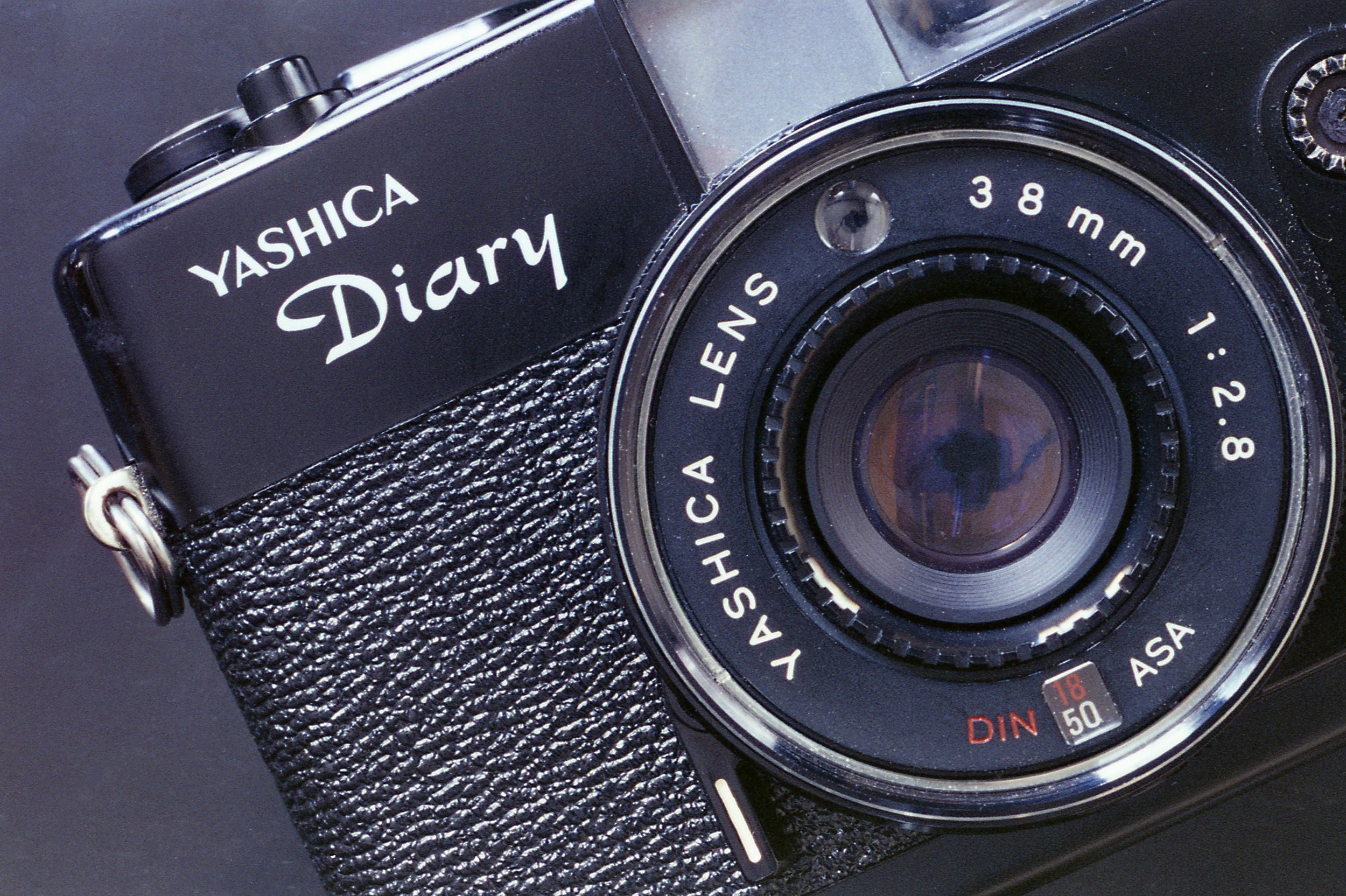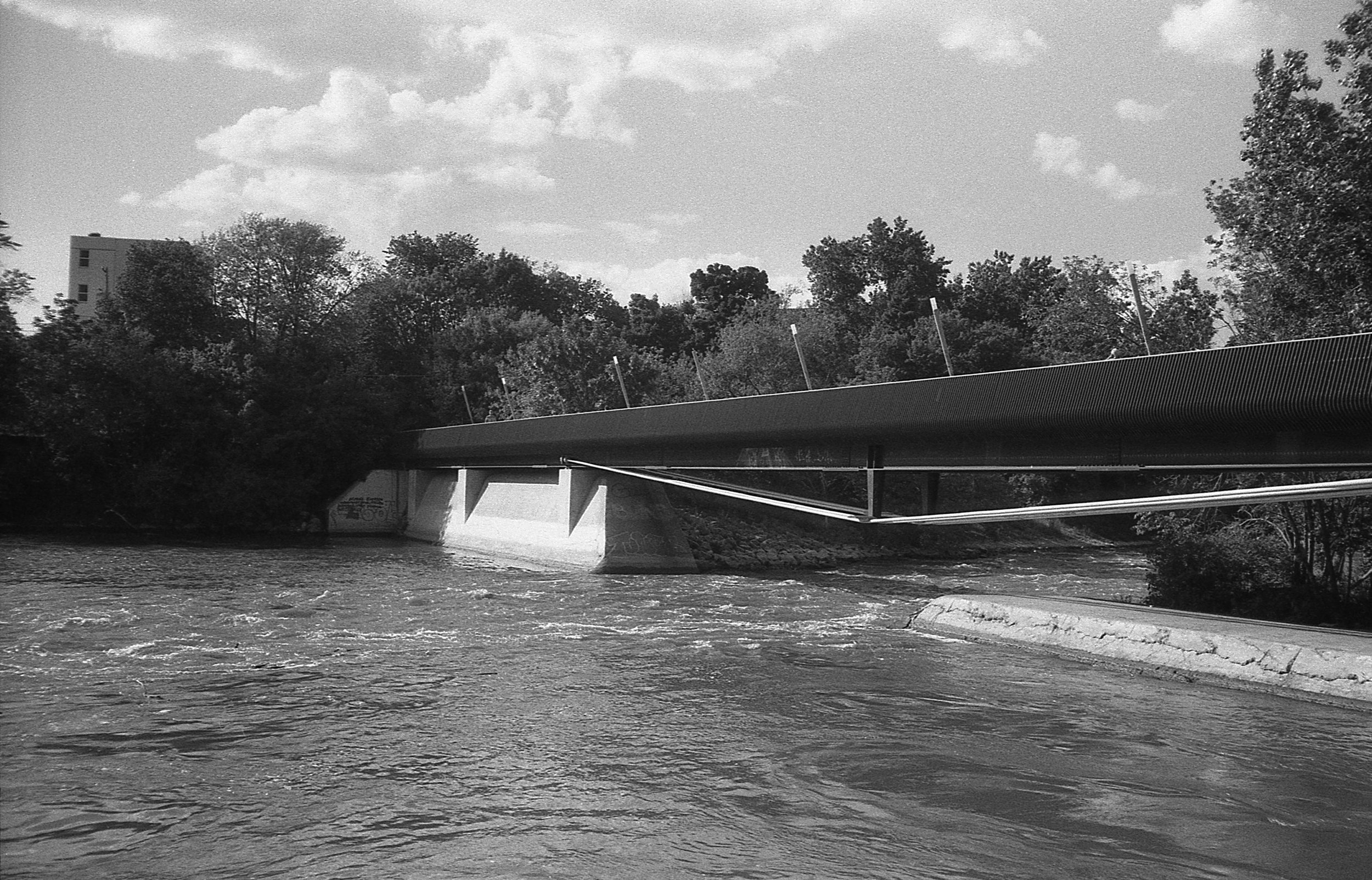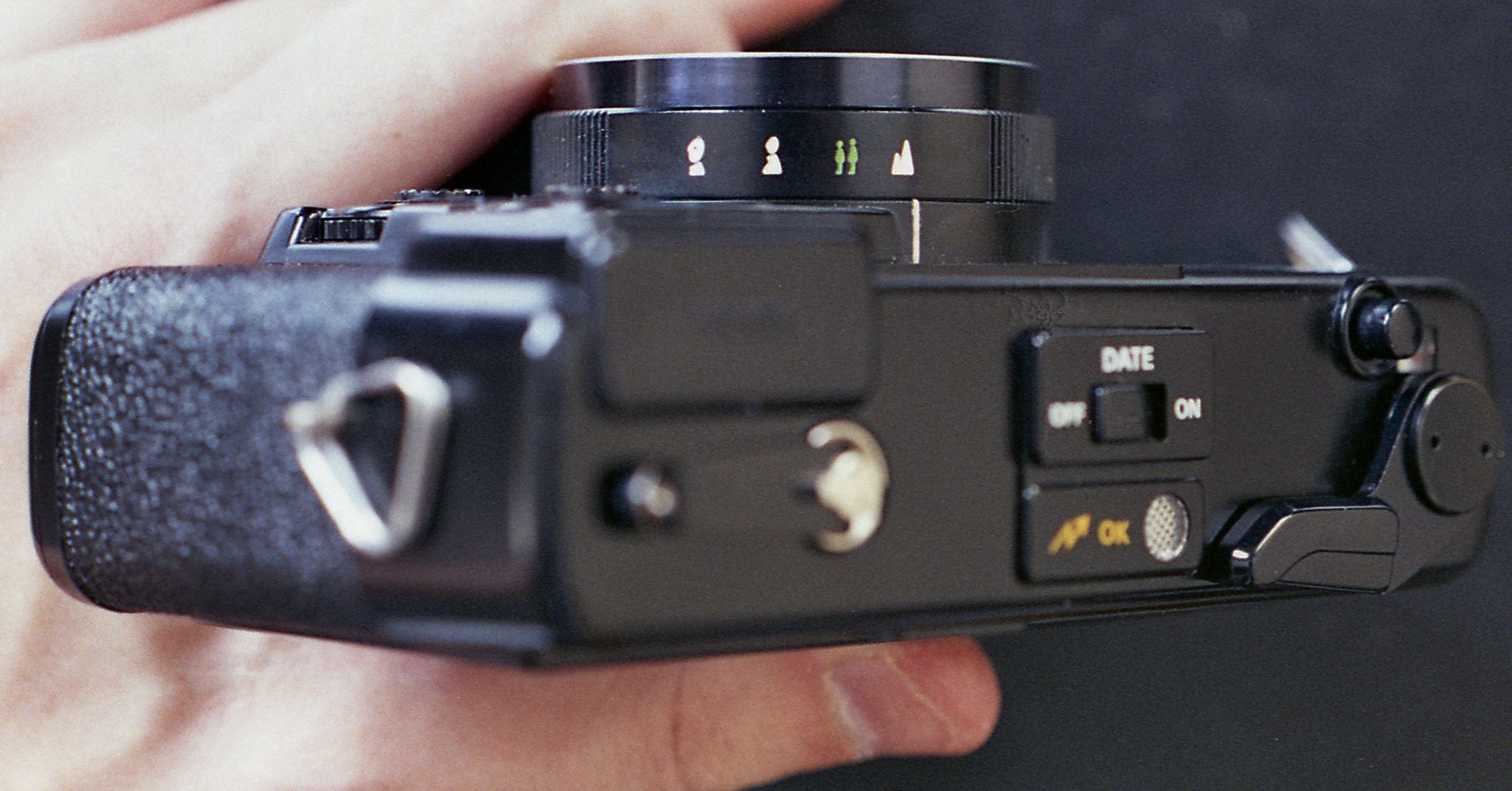July 24th 2022
Yashica Diary
In the decade after Canon released the Canodate E, the first camera with a date printing function, a choice few manufacturers released their own date printing cameras. Mainly sticking to the convention of day/month/year, Yashica attempted to innovate on this feature by adding a few new and interesting features. Released to an unknowing public in 1978, this is the Yashica Diary.
The Photographers Diary
Yashica was not the first manufacturer to put a date printing function on a camera, that honor goes to Canon, but I will argue that they were the first to attempt to improve upon the design. Early date printing cameras really pushed the feature to the forefront, having the date printing function not as an option on the film door, but built into the camera body itself. Little seems to have been written about the camera as well, having only a brief mention in a British photo magazine stating that it was on display at a show in 1978 with its similar non-date version, the ME-1.
At the tail end of the 1970s, Yashica seemed to find its stride within the compact 35mm type of camera design. A plastic and metal hybrid design that feels solid in the hand and has a particular style about it. The Yashica diary is toward the beginning of this design history that Yashica stuck with into the mid 1980s. An all black color scheme with minimal screen printed text makes for a clean look, with nothing really grabbing to the eye. Another Yashica signature of this era is an over all square design, but with rounded edges, making for a camera that is industrial in look, but comfortable in practice.
The Yashica diary is an automatic exposure scale focusing camera that needs batteries to function. There is no manual option here. Running off of two AA batteries, located on the camera’s bottom, the meter is essentially always on and continuously charging the flash. It may just be my particular example, but it completely drains batteries overnight so I would recommend you put batteries in only when you are using it. Looking through the viewfinder, you are greeted with standard frame lines, parallax correction marks, and an aperture scale on the right side. The metering scale goes from an aperture of 4-8-16 with dots in between and over/under exposure red areas on each end. When the meter needle is in the bottom red under exposure area, the camera will prevent you from taking a picture and a red LED will blink at you. This is essentially the low light warning and indication to use the flash. If the meter is in the overexposure top red portion, nothing of note happens and you are still able to take the picture.
Looking at the top of the camera, you can see a few controls and switches. On the right hand side, you have the winding lever, shutter button, and frame counter. On the far left hand side, is the flash eject button and rewind lever. In the center of the top is the flash charge light, also reflected in the viewfinder. It’s a bit different from other lights I’ve seen, the light is off when charging, flashes when the charge is almost done, and solidly lit when it is ready to take a picture. Lastly and the main feature of this camera is the date printing feature On/Off switch. When on, there is a reminder on the bottom left hand side of the viewfinder and an LED that turns on when it is printing the date to the negative.
Looking at the camera’s back and sides, it is standard through and through with a regular film rewind button and tripod socket on the bottom. Moving to the front of the camera, this is where the date controls and focus lie. Starting with the lens, you have a 38mm f/2.8 Yashica branded Lens with the metering cell inside the filter threads. The ASA range goes from 25 to 400 and can be changed by rotating the inner ring on the lens. The focus throw is reasonably short on the lens with only one indention on the green group setting. The lens has the classic, head and shoulders, person, group, and mountain markers on the top of the lens, with a more detailed scale on the bottom. This camera can focus from infinity and 10 feet (5 meters marked) down to 3.3 feet (1 Meter). There is also an eight second self timer right next to this focus scale.
To the right of the lens is the main show of the Yashica Diary, the date function. This is where the camera stands out from the competition as well, being one of the first to feature the day of the week and optional letters in the month setting. Each wheel on the top and sides controls the numbers; on the face is the week and year, and on the sides the day and month. The week goes from Sunday to Saturday, each in their three letter abbreviations and Sunday marked in red, to a blank spot, or the option of Sunday through Friday in a singular Kanji character. Below that is the day going from 1-31 and the option of a blank spot. Moving down we have the month setting, going from 1-12, the letters A-S, and an optional blank spot. Lastly is the year, going from 78 to 91 and an optional blank spot.
That is all for the Yashica Diary other than a few more of its specifications. The lens is a three elements in three groups design and one that Yashica used on a fair bit of their cameras around the late 1970s. There is no cable release either, but that is because you technically would not need it. The camera’s minimal shutter speed is 1/60th of a second with a maximum of 1/360th. A reasonable aperture range from f/2.8 to f/19 and the built in flash will automatically adjust the aperture based on the ASA and distance the lens is set to (infinity focus will not fire the flash). There is a second camera in the series, but more in secondary naming than an actual second iteration. The Yashica Auto Focus Motor-D, the date printing version of the original camera, has a secondary name printed on the top plate. This camera is also known as the Yashica Fully Automatic Diary and features a quartz date function on the camera’s back cover.
THE SPECS AND FEATURES
Shutter Speeds - 1/60th to 1/360th
Aperture - f/2.8 to f/19
Meter Type - “Top-Eye” CdS sensor
Shutter - metal, leaf style, automatic
ASA - 25 to 400
Lens - 38mm Yashica Lens, 3 elements in 3 groups
Flash Option - Built in flash, adjusts automatically based on distance
Batteries - 2 AA batteries
Film Type - 35mm
Other Features - 8 second self timer, Day/Week/Month/Year optional date printing,
The Experience
When it comes to date or time printing on a camera, I can take it or leave it. I’ve only used it incredibly sparingly in my life, only briefly while going a specific look. Looking around online for an original Yashica 35 ME, I found a great deal on a for parts, somewhat uncommon Yashica Diary. I sent the seller an offer and a week or so later the camera arrived at my doorstep.
In the realm of 70s/80s Yashica cameras, I tend to have a mix of good and bad experiences. Cameras dying mid roll, breaking, failures, and the like. So when I tested out the camera and saw a multitude of problems, I was honestly expecting it. Right off the bat there was medium corrosion damage to the battery compartment, but nothing that seemed too rough. A careful cleaning, scrubbing, and sanding of the contacts took care of the problem, but there was still no power to the camera or flash.
Looking deeper, there seemed to be a problem with the ASA dial, it would turn but the masking for the CdS meter cell was not in the right position and freely moving. That would explain why the meter would not be reading anything when it was in fact working. This was a lot more difficult than I imagined. I do not like when the original factory glued in parts, and this ring assembly was heavily glued complete with fragile plastic clips. Lots of chipping away and bending to get the pieces apart. Once glued back together and a light greasing of the rails, I finally had a reading from the internal meter.
Next in line was the flash, and there seemed to be some issues with winding as well. The flash was completely unresponsive, and that was a tricky one to diagnose. Was it corrosion from the batteries, cold solder joints, or a broken wire? None of the above. There is a metal leaf that springs from one contact, that was permanently bent touching the off position. Once bent up, the flash immediately started charging. It was a bit of trial and error to find the correct bend, but now I had the flash in working order.
Lastly was the winding lever. The camera would wind but not fully, it would then jam or fully wind but the lever would stick. This can be a lot of issues, and there were a lot of interlinking components to the lever. After a bit of time observing the whole mechanism and moving as slowly as I could through the throw of the lever, I found the culprit. There was a very small catch that seemed to be lagging. The problem may be found but next is how to fix it. It did not appear to be bent, I tried a bit of denatured alcohol to free it up, but nothing. I tend to like grease on these types of components, but this was buried in the winding mechanism. I used a very small drop of oil, worked the shutter a handful of times and it freed the catch. Wiped away any access oil and assembled the camera for the last time. Fully working, the Yashica Diary was ready for its first test.
A partially cloudy day on a Saturday morning was perfect, and I think the black and white pictures really speak to that. Every shot was exposed perfectly with magnificent glow on a few of the images. Excatly the look and feel that I was going for and a stellar introduction to what the Yashica Diary was capable of. I tried a few instances of the date printing function, but it tends to be a bit difficult to see on black and white film.
Moving ahead a week, the weekend proved to be full sun and quite hot, but I tried my hand at a few color pictures to further test the Yashica Diary’s ability. In bright sun, the camera seemed to struggle with overexposure. Having somewhat limited shutter speed and aperture range is not ideal, but that could be easily corrected in the future on my part with slower film. The pictures were alright, but nothing to write home about. Wanting to test the waters of color again the next day, I set out with some expired film to see how that would fair in the Diary. Some wild color shifts and grain made for some interesting shots. Scanning and color correcting was incredibly difficult, but I was left with a single picture that I really enjoyed. Lastly, I wanted one final good test of color, and I went out on a partly cloudy weekend and had some much better results. Nothing very interesting, but proves that the camera handles color film well.
I ended up really enjoying the Yashica Diary and was very impressed with the results of the lens, especially with black and white film. The meter outperformed my expectations and I was able to scale focus relatively easily. A plus of this camera is all of the functions have a corresponding action in the viewfinder. When a camera has automatic exposure and other functions, I really enjoy when it keeps me informed of what is active and working, the exposure, and various other warnings. It did help me at times when I forgot to take off the date printing feature, and others when there was over or under exposure.
I feel like my time with the Yashica Diary is just beginning. It has a great feel, and a camera I know would be perfect for a holiday or vacation. The whole Yashica series of cameras that have the 38mm f/2.8 lens are great performers and each one has its own uniqueness. I would whole heartily recommend them all, but specifically the Yashica Diary to anyone who wants a grab and go date printing camera. It never let me down and was a joy to use.












